No products in the cart.
NEWS
Grow Your Own: Easy Vegetables for Busy Gardeners
Life is busy, and while the dream of a thriving home garden is appealing, finding the time for intensive care can feel impossible. Many aspiring gardeners are searching for easy vegetables that require minimal effort to cultivate successfully. The good news? You don’t need to be a seasoned expert or dedicate hours every week to enjoy fresh produce straight from your backyard.
While every plant needs some initial attention during planting and eventually harvesting, certain vegetables are incredibly forgiving and can largely take care of themselves in the interim. This makes them perfect candidates for anyone juggling a packed schedule or just starting their gardening journey. Of course, providing optimal conditions like consistent watering and occasional feeding will boost yields, but even with less hands-on time, these resilient crops are likely to reward you with a tasty harvest.
Think of it as “plant-and-forget,” almost. While periods of extreme heat or drought might require intervention (or a simple automatic watering system), in many climates and conditions, these selections prove remarkably self-sufficient. Let’s explore some top choices for a low-maintenance vegetable garden.
Beets: Rooted in Simplicity
Beets are a fantastic option for minimal-effort gardening. They thrive with cool weather, making them suitable for overwintering in milder regions or spring planting in cooler areas after the last frost. They can even tolerate partial shade.
Planting is straightforward: Sow seeds about 1 to 2 inches (2.5 to 5cm) apart in rows, ensuring the soil is well-draining. If your soil is heavy, simply mixing in some compost or other organic matter before planting makes a big difference. Cover the seeds lightly and give them a good initial watering.
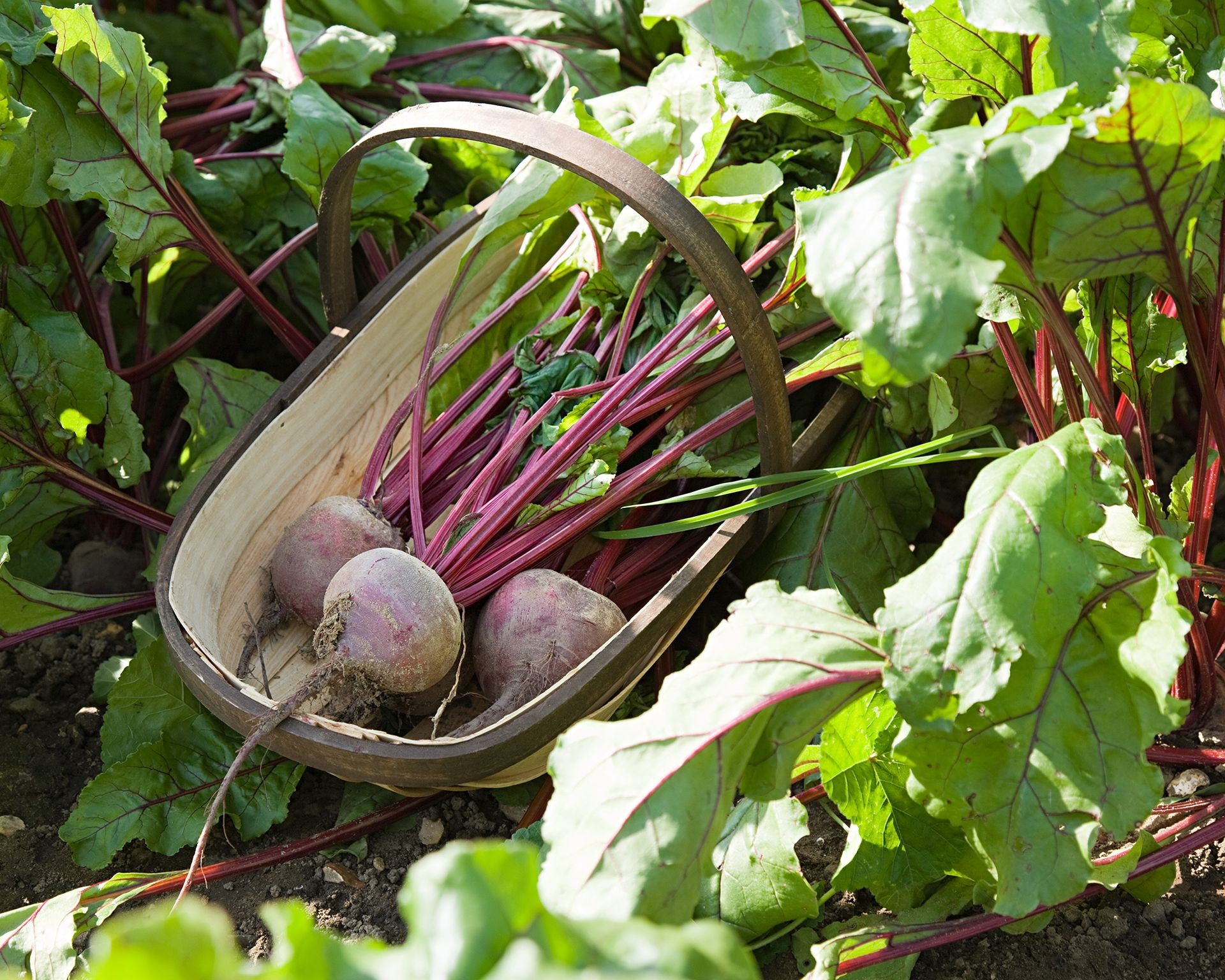 Freshly harvested red and golden beets in a metal trug
Freshly harvested red and golden beets in a metal trug
Seedlings typically emerge within a week or two. From there, beets are relatively hands-off. They are ready for harvest in about two to three months. Harvesting them when smaller yields a sweeter taste, while allowing them to grow larger results in thicker skins better for storage. A bonus? The vibrant beet greens are edible and delicious in salads or stir-fries, offering a two-in-one harvest!
Rhubarb: The Hardy Perennial Treat
Often treated as a fruit in the kitchen, rhubarb is botanically a vegetable and a true garden survivor. As a perennial, once established, it comes back year after year with minimal fuss. The key is patience; avoid harvesting stalks until the plant’s second or even third year to allow it to build strong roots.
You can easily start rhubarb from crowns or divisions. Give each plant ample space, roughly a square yard (0.8 square meter), as the large leaves need room to spread. Planting them along the edge of your garden border is a great idea to keep them from crowding other annual crops. Plant the crowns shallowly, only 1 or 2 inches (2.5 to 5cm) deep; planting too deep can prevent growth.
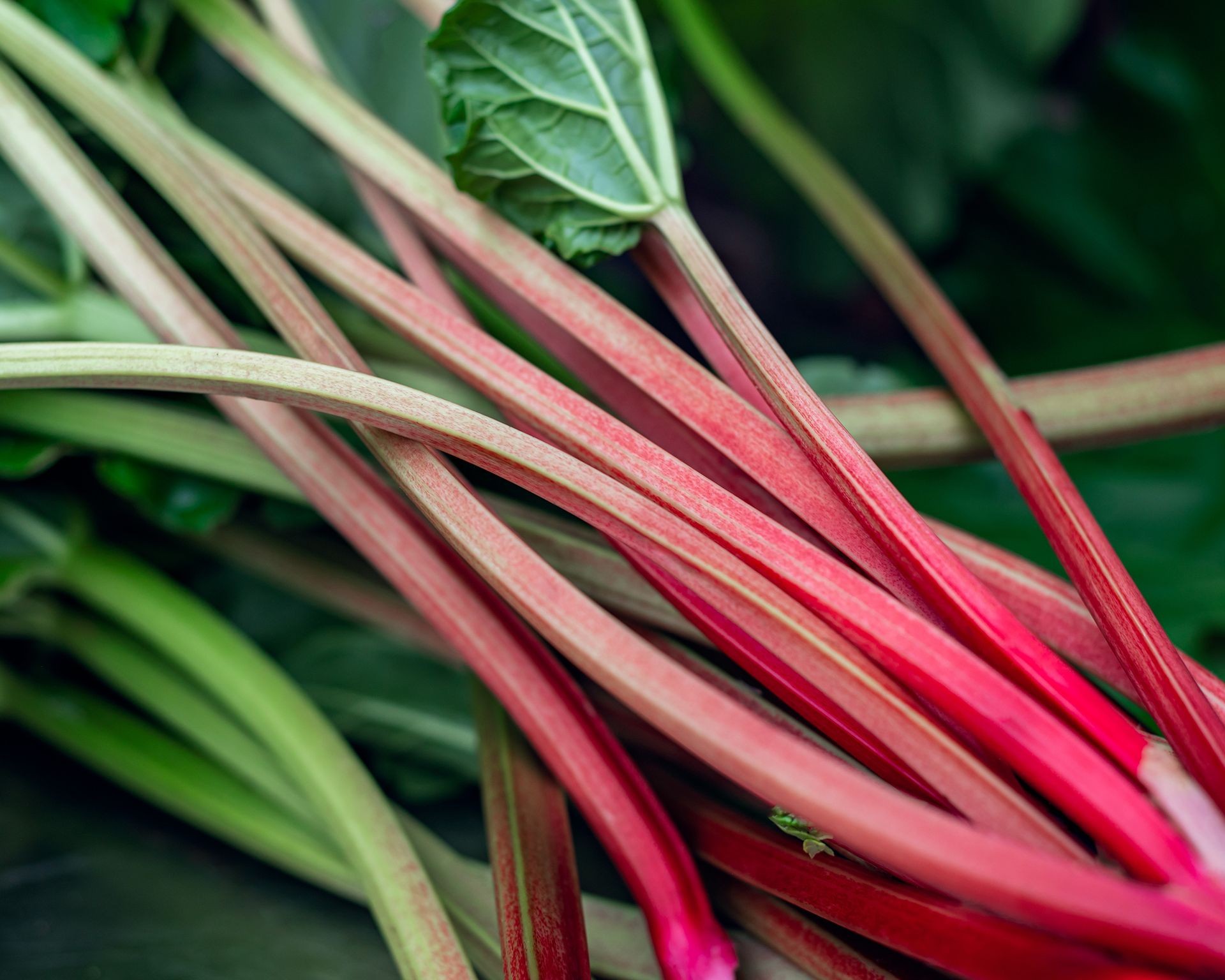 Bright red harvested rhubarb stalks bundled together
Bright red harvested rhubarb stalks bundled together
Ongoing care is remarkably simple. An annual mulch layer in spring is beneficial, occasionally pulling any weeds around the base, and watering only during prolonged dry spells are usually sufficient. Harvest stalks when they reach at least 10 inches (25cm) long, typically from spring through early summer. Ease up on harvesting later in the season (around late June/early July) to allow the plant to store energy for winter dormancy and vigorous growth the following spring.
Garlic: Patiently Simple Bulbs
Garlic is perhaps one of the most low-maintenance crops you can grow, though it does demand patience with a long growing season of six to seven months. It prefers cooler temperatures, making fall planting ideal in colder climates (four to six weeks before ground freeze) and winter planting possible in warmer zones.
Prepare your soil by incorporating organic matter like compost or well-rotted manure before planting. Break apart a garlic bulb into individual cloves. Plant each clove about an inch (2.5cm) deep, with the pointed end facing up, spaced 2 to 4 inches (5 to 10cm) apart in rows 12 to 18 inches (31 to 46cm) apart. Cover with soil and water initially.
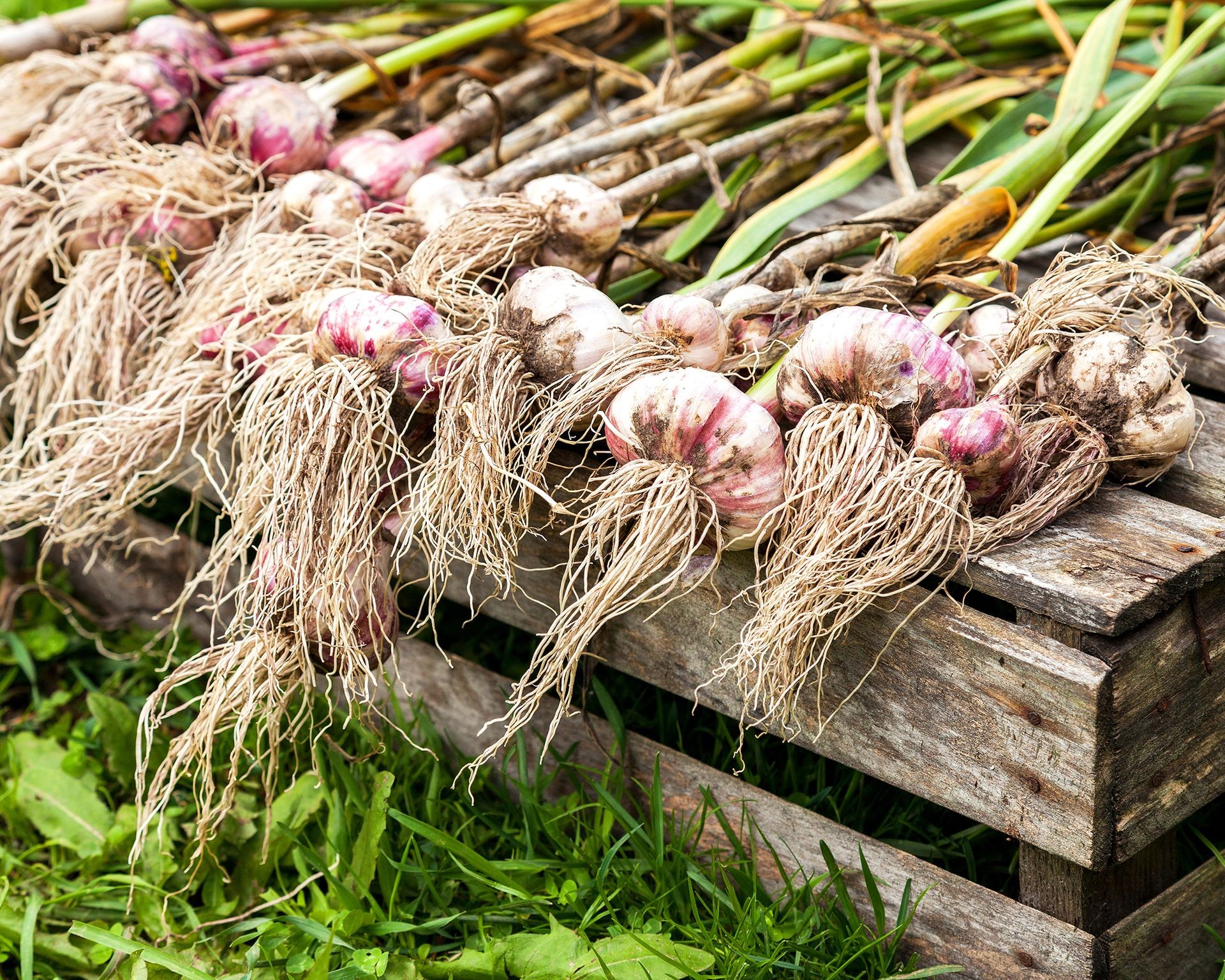 Bundles of freshly harvested garlic bulbs with soil still attached to roots
Bundles of freshly harvested garlic bulbs with soil still attached to roots
After planting, you can essentially leave garlic to do its thing. While optional feeding every few weeks until late spring and watering during droughts can improve the crop, even without these steps, you are likely to harvest usable bulbs come summer when the leaves start to yellow and fall over.
Winter Squash: Big Plants, Little Effort
Winter squash varieties, from classic butternut to unique spaghetti squash, offer substantial and flavorful fruits that store well. While they require space for their sprawling vines and take a long time to mature (80 to 110 days), the effort required once they are planted is minimal.
Planting should wait until all danger of spring frost has passed. Sow seeds directly into the ground in rich, well-drained soil, typically in small mounds or hills. Once seedlings are about 2 inches (5cm) tall, thin them to the strongest two or three plants per hill, spacing hills about three feet (1m) apart.
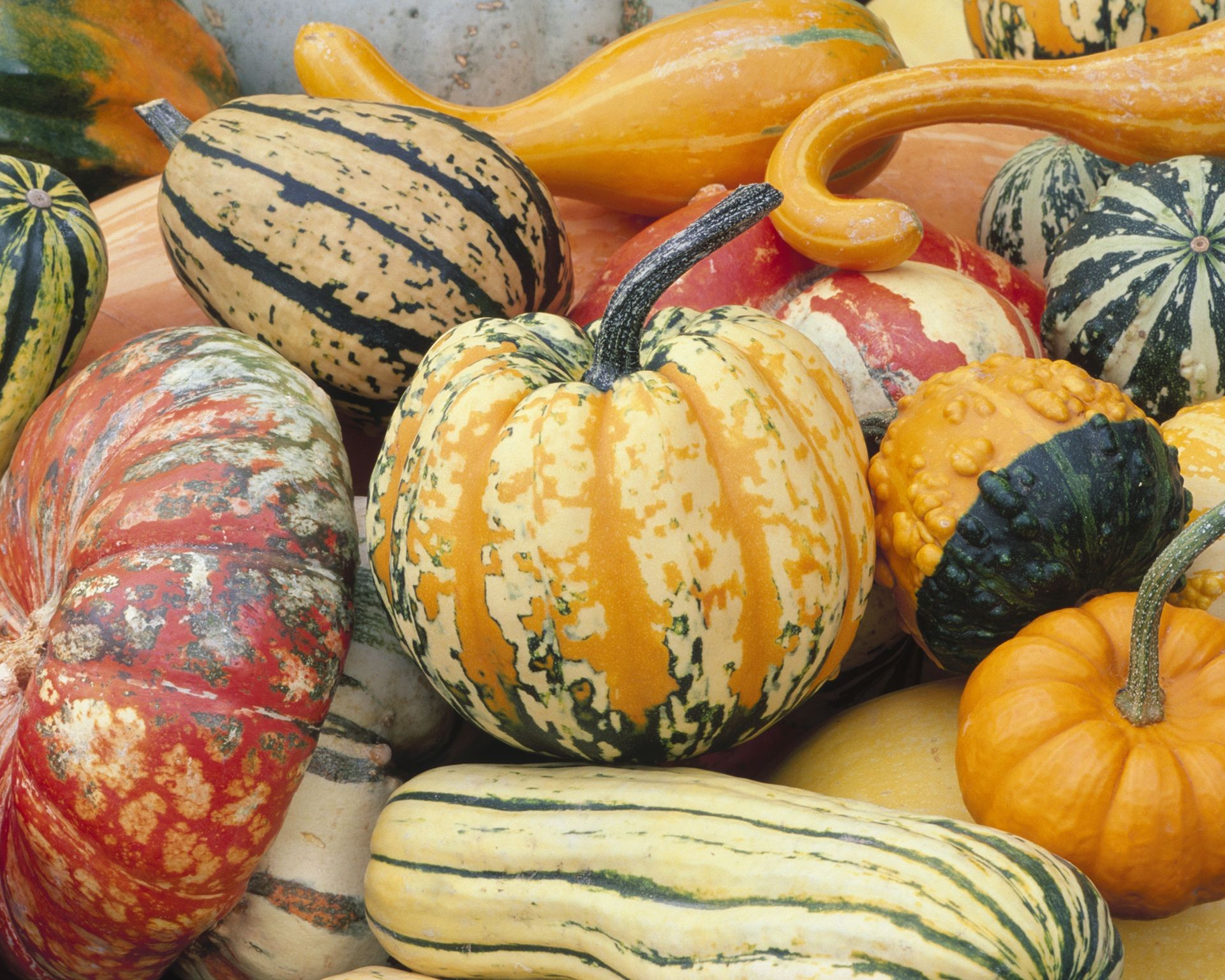 Variety of colorful winter squash arranged together
Variety of colorful winter squash arranged together
Once established, let the vines roam. While watering during dry spells and placing straw or mulch under developing fruits can prevent rot and discoloration, the plants are generally quite self-sufficient as they vine across the ground. Harvest occurs in the fall or early winter when the rinds are hard and the stems woody.
Potatoes: The Buried Treasure
Potatoes are a staple crop that is surprisingly undemanding once planted correctly. They prefer cooler weather and can be grown as a summer crop in the north or a winter crop in the south. With over 100 varieties, there’s a potato for almost every taste and use.
The lowest-maintenance approach involves planting ‘seed potatoes’ (special potatoes grown specifically for planting, not from the grocery store, which may be treated or carry disease). Early season varieties mature fastest (around 3 months) and are good candidates for containers or grow bags if space is limited. Maincrop varieties take longer (4-5 months) and yield larger potatoes best grown in the ground.
 Basket filled with freshly dug up potatoes covered in soil
Basket filled with freshly dug up potatoes covered in soil
For a truly low-intervention method, bypass the traditional “hilling” technique. Instead of planting seed potatoes shallowly and repeatedly mounding soil over the growing plant, simply plant them deeper initially, around 5-6 inches (12 to 15cm) deep. This deep planting protects the developing tubers from sunlight (which turns them green and toxic) without needing subsequent hilling. While incorporating a balanced fertilizer at planting and possibly once more when plants are 8-12 inches tall, along with watering during dry periods, boosts yield, the plants will still grow and produce a crop with minimal attention. Harvest when the plant tops yellow and wilt.
Onions: Sets for Simplicity
Growing onions from small onion sets rather than seeds is the secret to an easy onion harvest. Onion sets are essentially tiny, immature bulbs grown the previous year and stored for replanting. This gives them a significant head start and makes them much more robust and less prone to issues than delicate seedlings.
Plant onion sets in a sunny spot with well-draining soil enriched with organic matter when temperatures are consistently around 50°F (10°C). Plant them about 3/4 inch (2cm) deep, spaced 2 to 4 inches (5 to 10cm) apart in rows 10 to 12 inches (25 to 30cm) apart. The tips of the sets should just protrude through the soil surface. Firm the soil around them and water well.
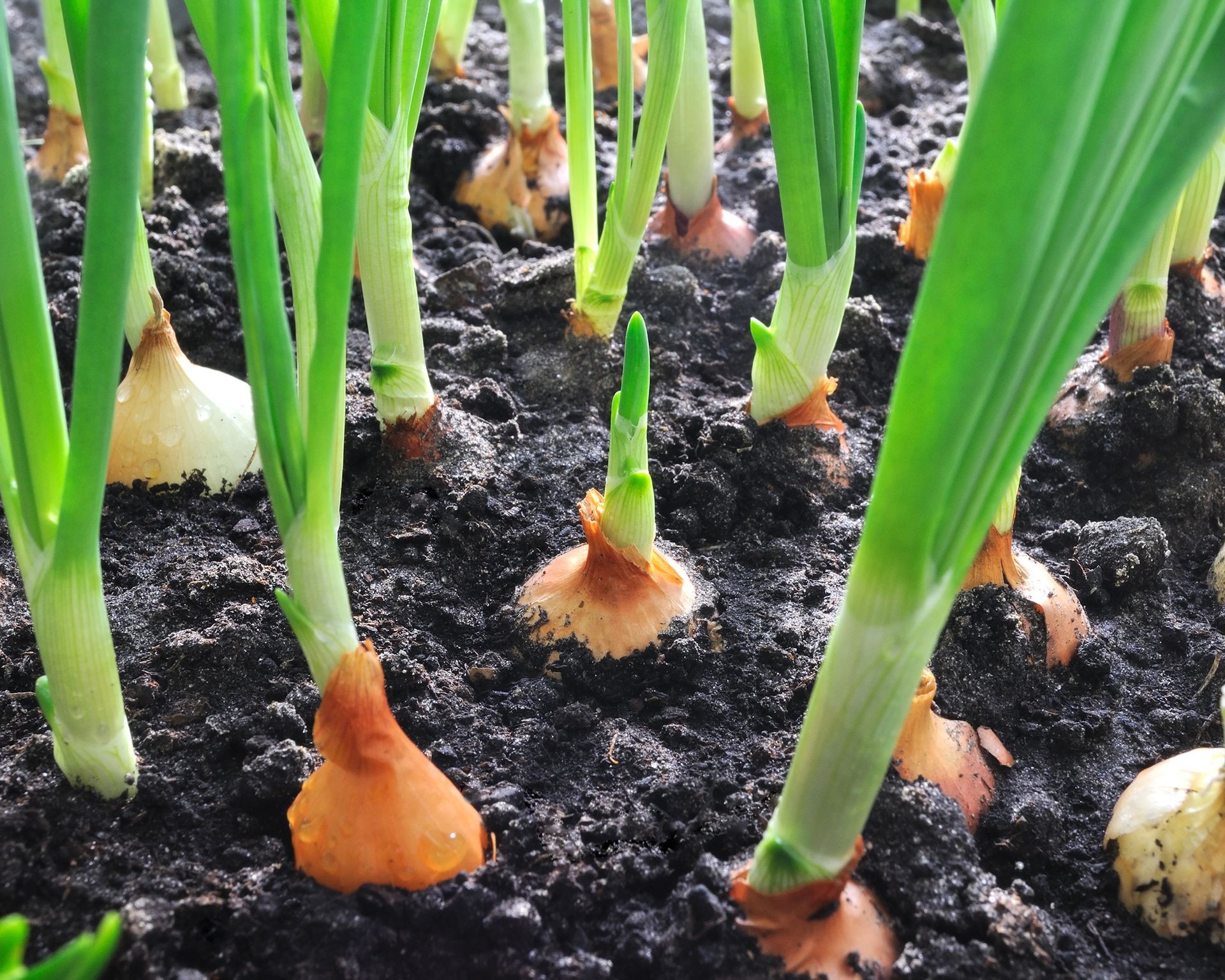 Rows of young onion plants growing in the ground
Rows of young onion plants growing in the ground
Beyond keeping an eye out for weeds and watering during periods of drought, onions are relatively low-maintenance. Pinch off any flower stalks that appear to prevent the plant from “bolting” (going to seed) and diverting energy from bulb formation. Onions are typically ready to harvest around 100-120 days after planting when the tops naturally fall over and start to brown.
Start Your Easy Garden Today
Growing your own food doesn’t have to be a time-consuming chore. By choosing these resilient and low-maintenance vegetables, busy gardeners can enjoy the immense satisfaction of harvesting fresh produce with minimal stress. These “plant-and-forget” options are perfect for building confidence and enjoying the simple pleasures of gardening, even with a packed schedule. Ready to give it a try? Biogarden.Asia offers a range of quality gardening supplies and expert advice to help you get started on your journey to an easy, rewarding vegetable garden. Explore our resources and find everything you need to cultivate your own delicious, homegrown goodness.



